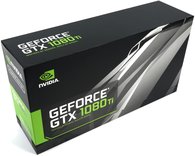 Introduced by Nvidia's boss Jen-Hsun Huang at the Games Developers Conference in San Francisco, the GeForce GTX 1080 Ti is the new spearhead of GeForce consumer cards, offering as many shaders as the Titan X (Pascal), but clocking slightly higher.
Introduced by Nvidia's boss Jen-Hsun Huang at the Games Developers Conference in San Francisco, the GeForce GTX 1080 Ti is the new spearhead of GeForce consumer cards, offering as many shaders as the Titan X (Pascal), but clocking slightly higher.
At 819 euros, the new flagship isn't really cheap, but significantly cheaper than the Titan X (Pascal) – and easily displaces some of the Board Partner cards of the GeForce GTX 1080 without Ti.
All the GeForce GTX-1080 models are expected to fall significantly in price soon after the geForce GTX 1080 Ti's launch at the end of this week, following the fate of the GeForce GTX 980, which happened the same time.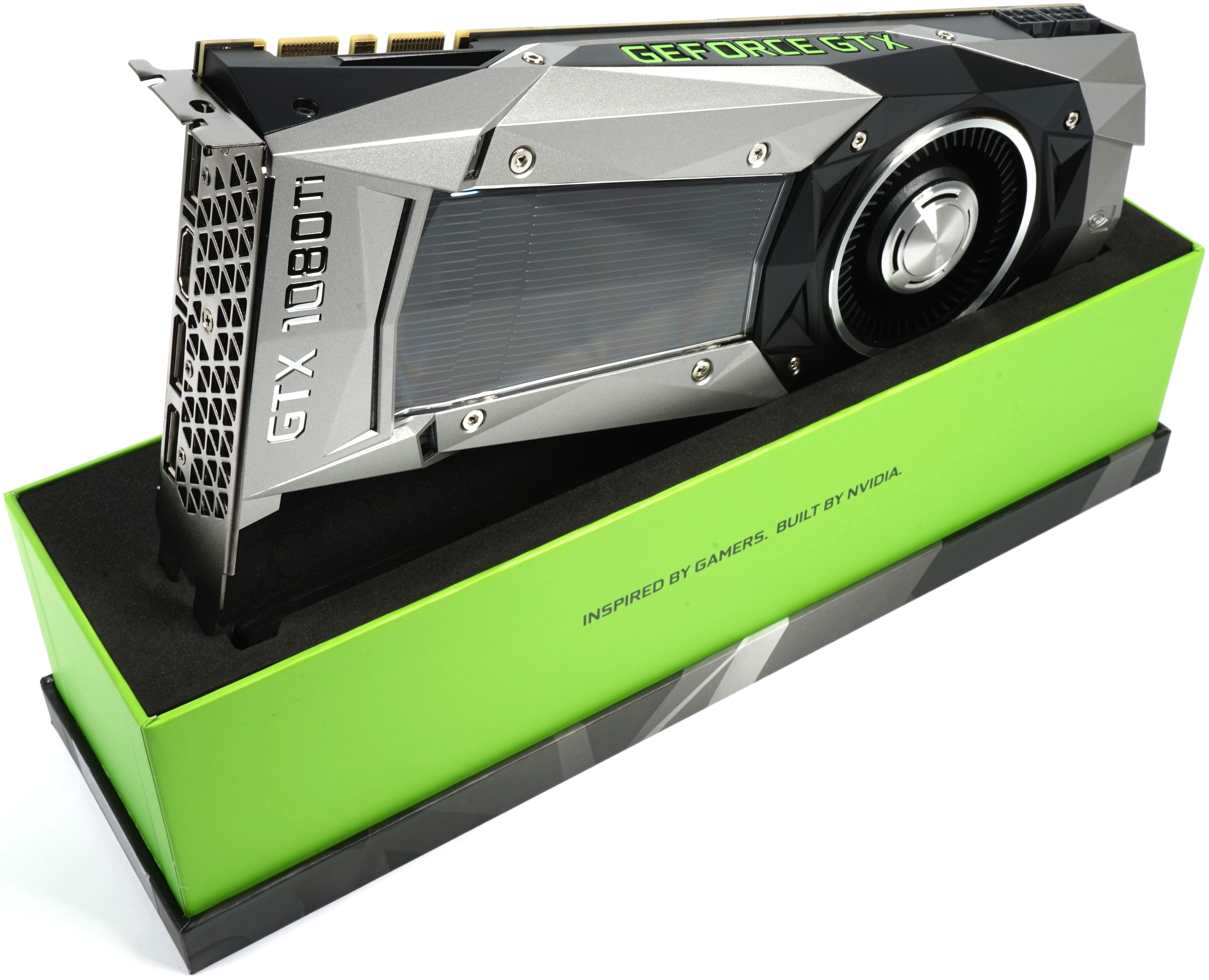
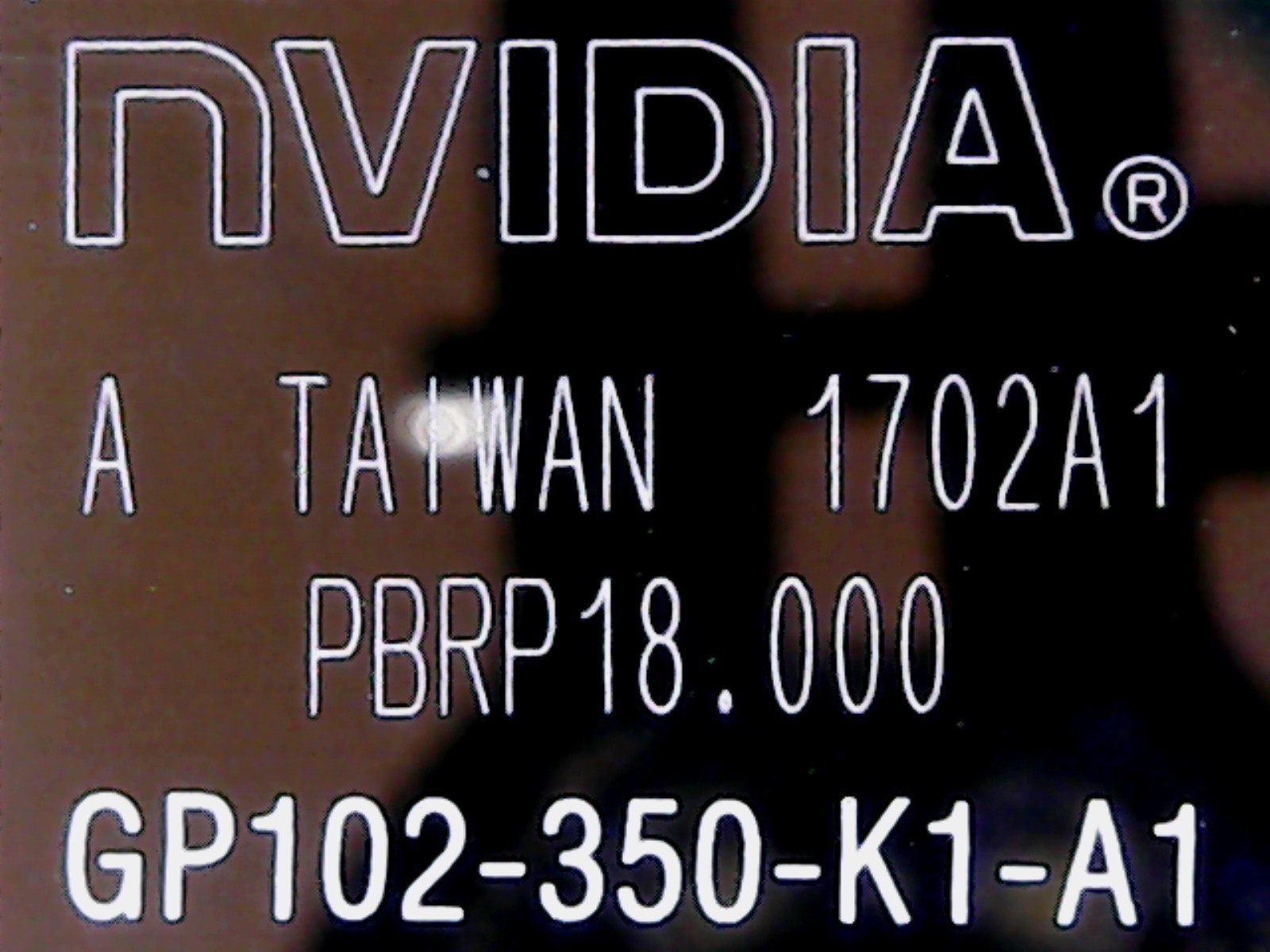
And because it's so nice to remember: this kind of salami disc launches has become seemingly indispensable for the (graphics card) manufacturers.
While it was the GeForce GTX 680 years ago, even AMD has used this tactic very intensively. And so it is not surprising that today we are only allowed to show "unboxing" images, but cannot publish any benchmarks or any metrics.
But where does unboxing end? We just unpacked everything up to (almost) the last screw and thought about the photos that were taken. We will logically stick to the NDA, but we will also be able to gain interesting knowledge.
First of all, however, we summarize the already known performance data, which we are already allowed to publish, as they are not subject to the NDA. We will also compare you with the full expansion of the chip in the form of the Quadro P6000:
| Nvidia GeForce GTX 1080 Founders Edition |
Nvidia GeForce GTX 1080 Ti Founders Edition |
Nvidia Titan X – (Pascal) Mr President, I would like to |
Nvidia Quadro P6000 |
|
|---|---|---|---|---|
| Gpu | GP104 | GP102 | GP102 | GP102 |
| Transistor | App. 7.2 trillion | App. 12 trillion | App. 12 trillion | App. 12 trillion |
| Shader Units | 2560 | 3584 | 3584 | 3850 |
| Base Clock Frequency | 1607 MHz | 1480 MHz | 1417 MHz | 1506 MHz |
| Maximum Clock Frequency | 1785 MHz | 1582 MHz | 1531 MHz | 1645 MHz |
| TMUs/ROPs | 160/64 | 224/88 | 224/96 | 240/96 |
| Pixel Fill Rate | 114.2 GPix/s | 130.24 GPix/s | 136.0 GPix/s | 144.6 GPix/s |
| Texel Fill Rate | 257.1 GTex/s | 331.5 GTex/s | 317.4 GTex/s | 361.4 GTex/s |
| GDDR5X Memory Size | 8192 MB | 11.264 MB |
12.228 MB | 24.576 MB |
| Memory Clock Frequency | 5000 MHz | 5500 MHz | 5000 MHz | 4512 Mhz |
| Memory Interface | 256 bits | 352 bits | 384 bits | 384 bits |
| Memory Bandwidth | 320 GB/s | 484 GB/s | 480 GB/s | 433.2 GB/s |
| Power Consumption (TDP) | 180 watts | 250 watts | 250 watts | 250 watts |
Unboxing of the map
Nvidia said at the time of the performance that the cooler had changed again compared to the Titan X (Pascal), but this is not noticeable at this time. But in the course of our disclosure campaign, we can certainly write something about it later.
Let's therefore return to the graphics card itself, whose appearance has been completely taken over except for the label. This also applies to the material mix of aluminium casting and plastics as well as the optically dominant radial cooler with a net diameter of 6.2 cm.
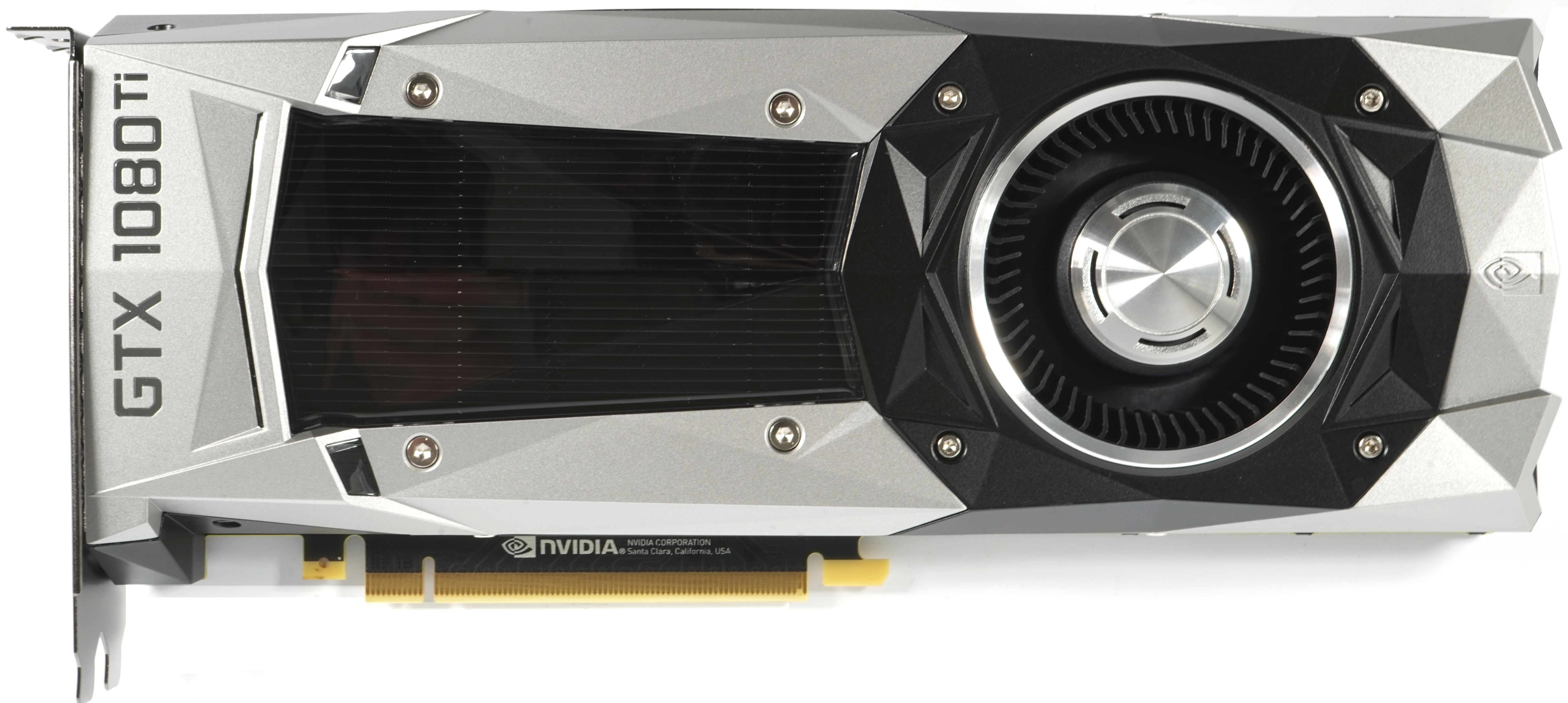 |
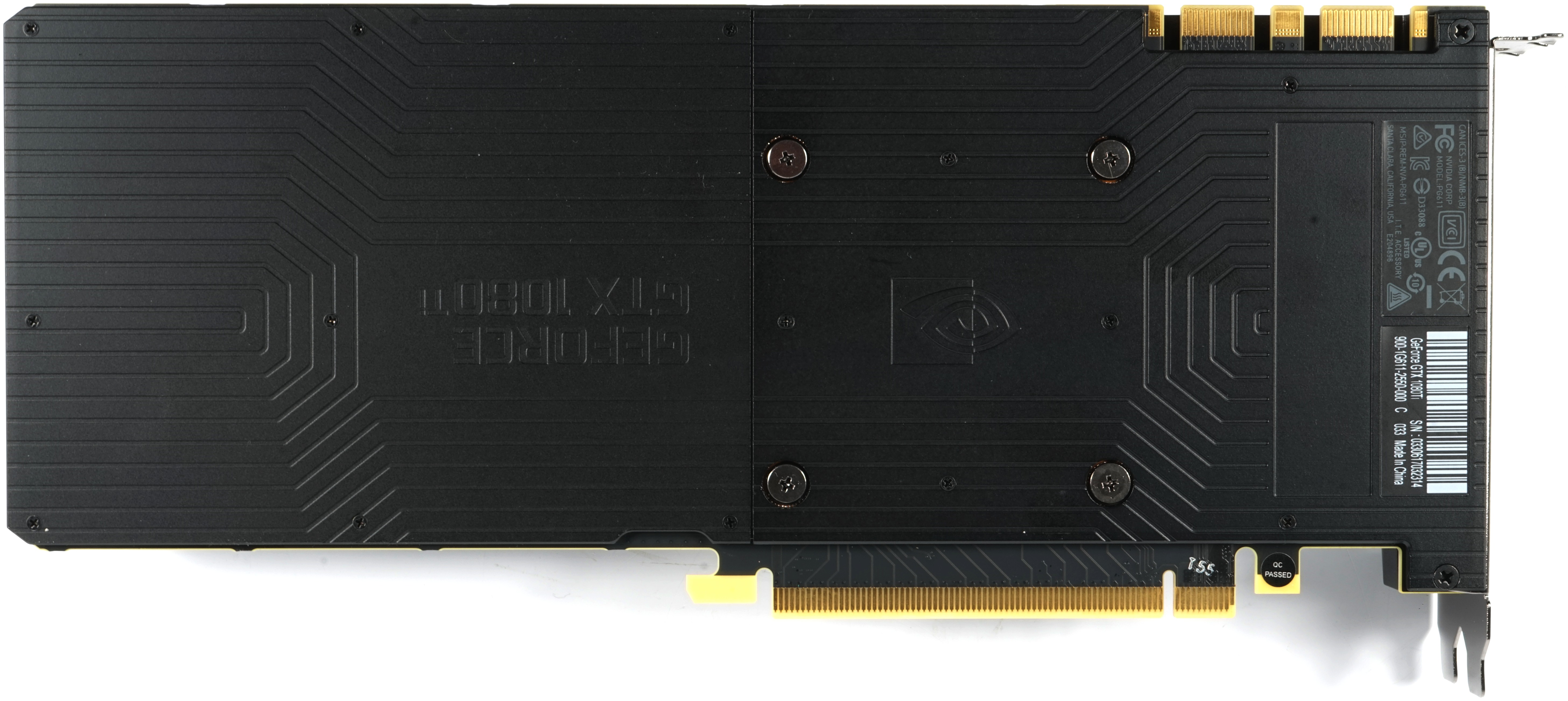 |
Mt 26.9 cm from the exterior of the slot aperture to the radiator end, the dimensions compared to the Titan X (Pascal) have not changed, which also applies to the installation height of 10.5 cm from the top edge of the motherboard slot to the radiator top edge. The installation depth of 3.5 cm also stands for the already known dual slot design, while the weight of the card has increased a little to 1039 grams.
Since the size and weight specifications are actually real measurements, we hope, of course, that we have not violated the NDA.

The top also gives itself in the usual picture and shows next to the green illuminated lettering an 8- and 6-pin external power supply connection. The underside is even more unspectacular and shows besides the cover actually … Nothing.

The end of the card provides the usual air openings for a part of the air outlet, whereby it can be assumed from the plate design that the heat dissipation into the interior of the housing is rather marginal. However, we will only be able to arrive at the concrete values within the framework of the residual sausage tip; everything is still under lock and key.
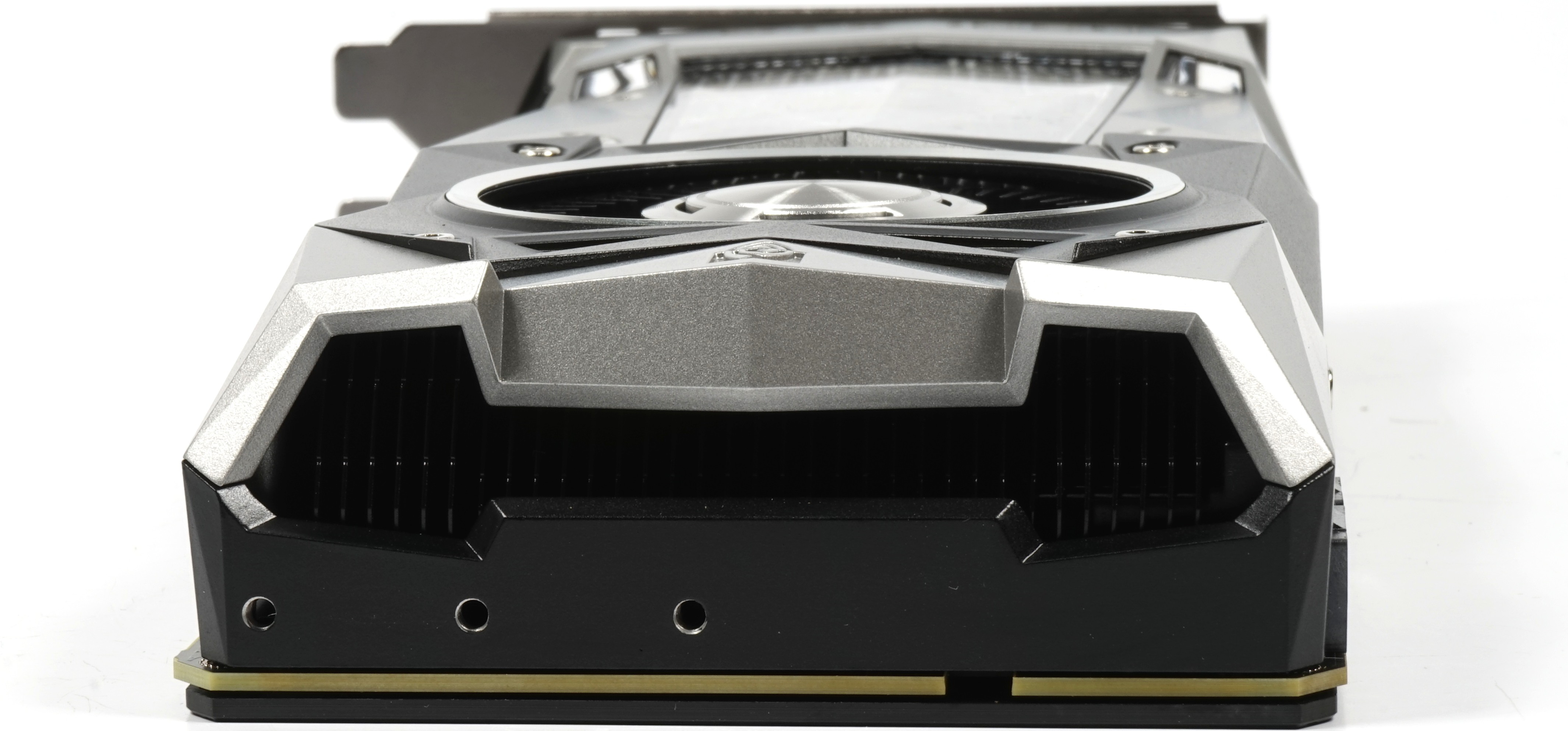 |
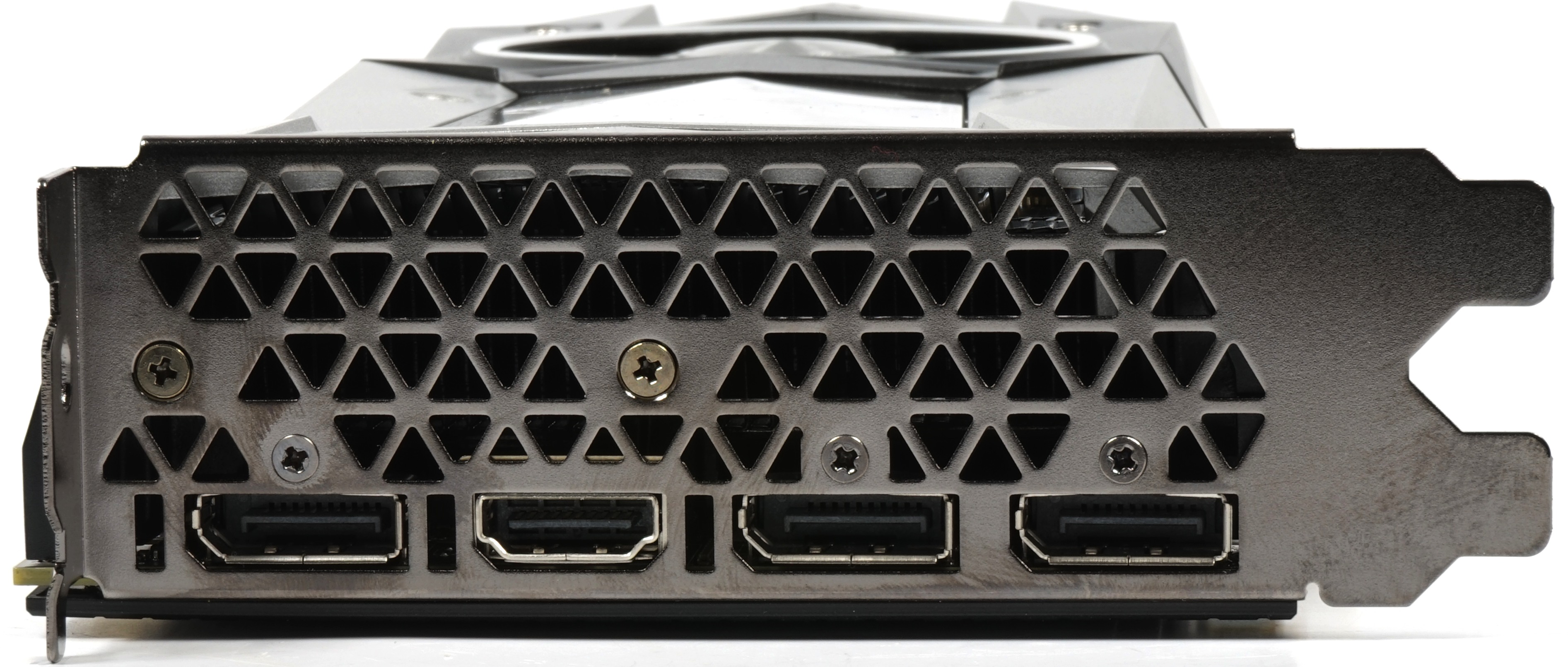 |
To improve the air outlet at the slot aperture, Nvidia has completely dispensed with the DVI connector and offers instead only three DisplayPort ports and one HDMI. The rest is dominated by the ventilation grille.
Of course, we don't want to deprive readers of Nvidia's introductory video, on the basis of which we later took a closer look at the map ourselves. We then show with our own pictures exactly what Nvidia has already given us in the video as nice to look at render graphics.
Unboxing of the cooler
Since the NDA only applies to measured values and benchmark results and unboxing is expressly desired, we consulted the cutlery case and simply freed the card from its outer shell as usual.
Nvidia mainly uses very thin sblocks (0.5 mm) to attach the two-piece backplate, whose counter-thread in turn sits in the screw head of Nvidia's special piggyback screws below the backplate. These rather unusual hexagonal screws (M2.5) are used at the same time to attach the complete housing to the board.
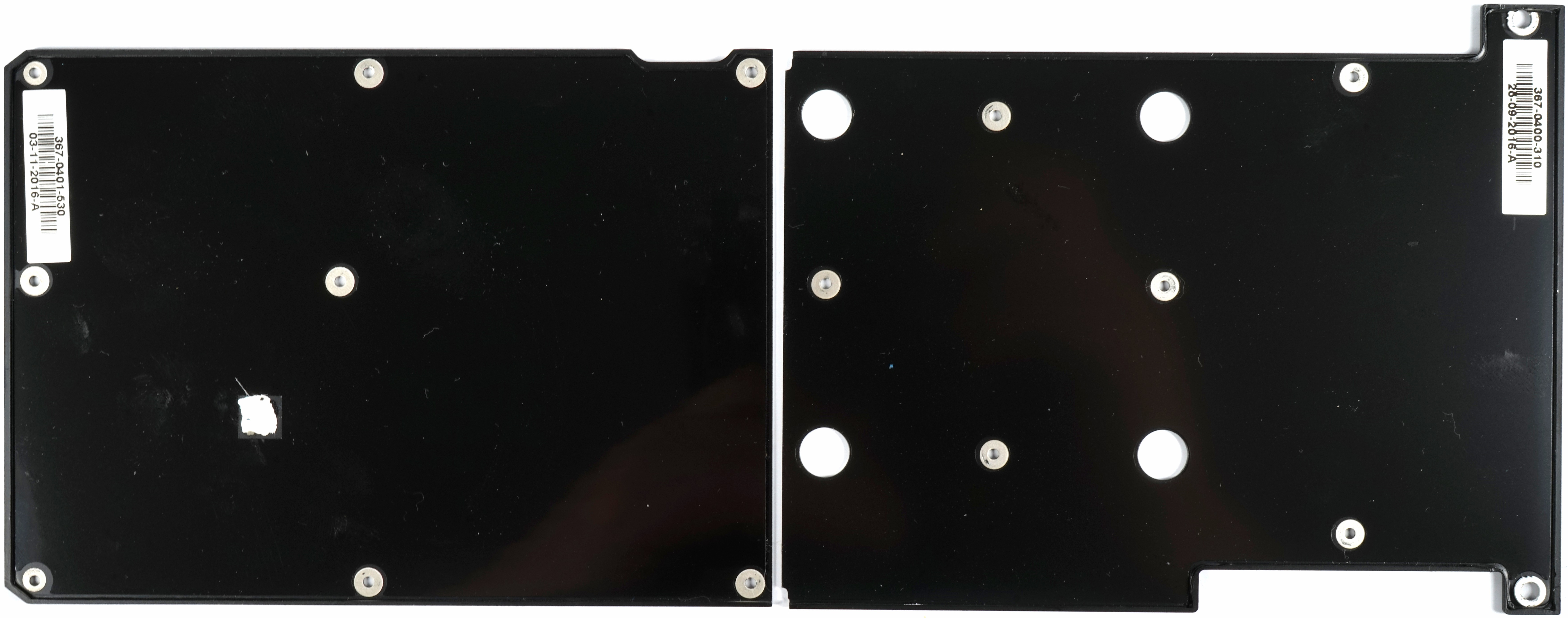
The first change has already become apparent, because Nvidia connects the PWM controller chip on the back of the board with a thick thermal conductive fleece, which is actually rarely used, with the one backplate half for better heat dissipation. This would work even better if Nvidia had simply omitted the plastic film with which the backplate is glued inside.
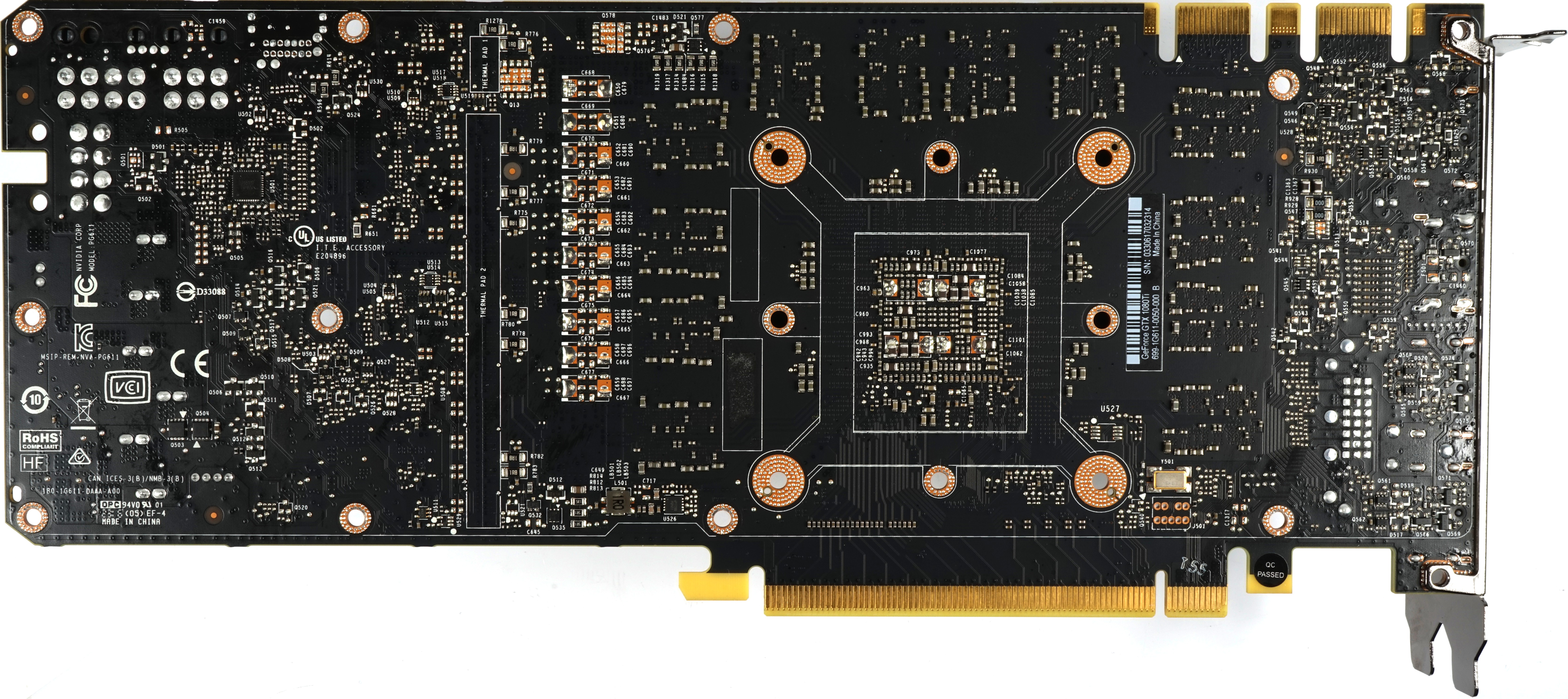
If we take a quick look at the exposed back of the board, then we see half left two marked areas labeled with "Thermal Pad 1" and "Thermal Pad 2", but in the final product the provided pads are missing. Whether Nvidia has simply left the courage (or even the lust) here, we cannot judge – and must not measure anything yet.

In addition to the usual thermal pads for voltage converters and memory, the solid plate of the radiator frame again carries some of the aforementioned nonwoven strips, which additionally connect active components such as VR chips, MOSFETs and diodes thermally to the bottom of the large plate. . We have not been able to make any other changes to the cooler so far.
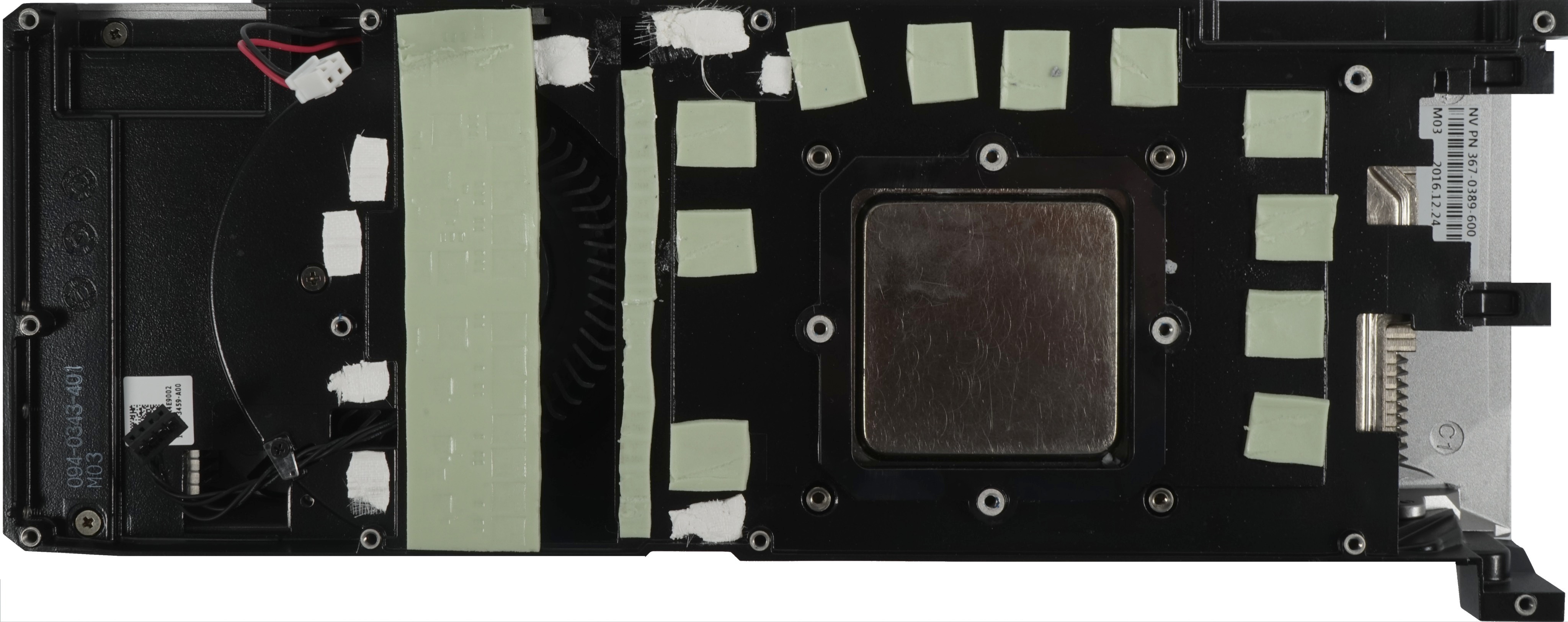
As with the other Founders Edition (FE) cards, Nvidia again relies on a vapor chamber inserted into the ground, which is attached to the board with four spring screws and represents the actual GPU cooler. The rest is cooled over the large frame as already described.
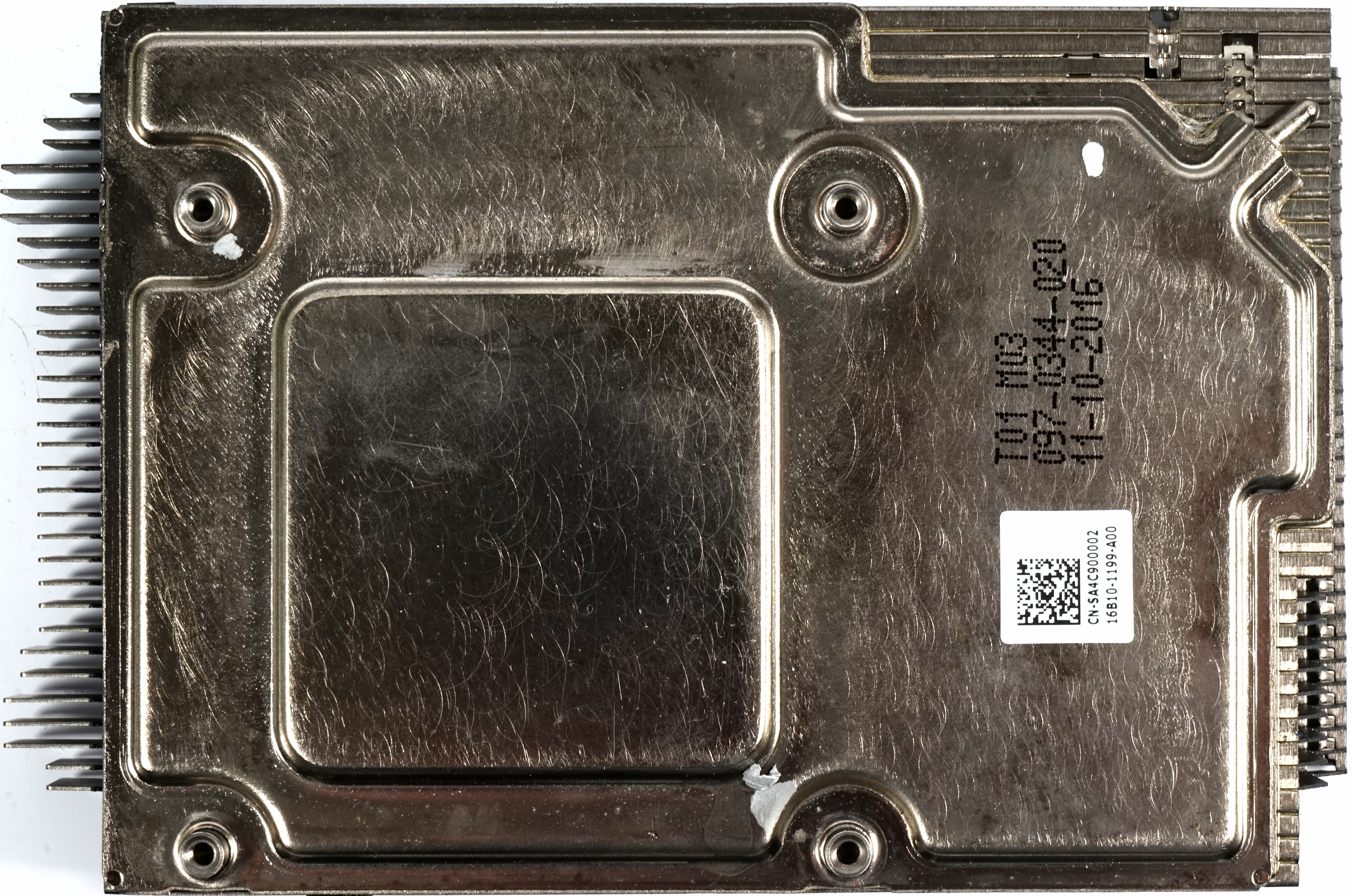 |
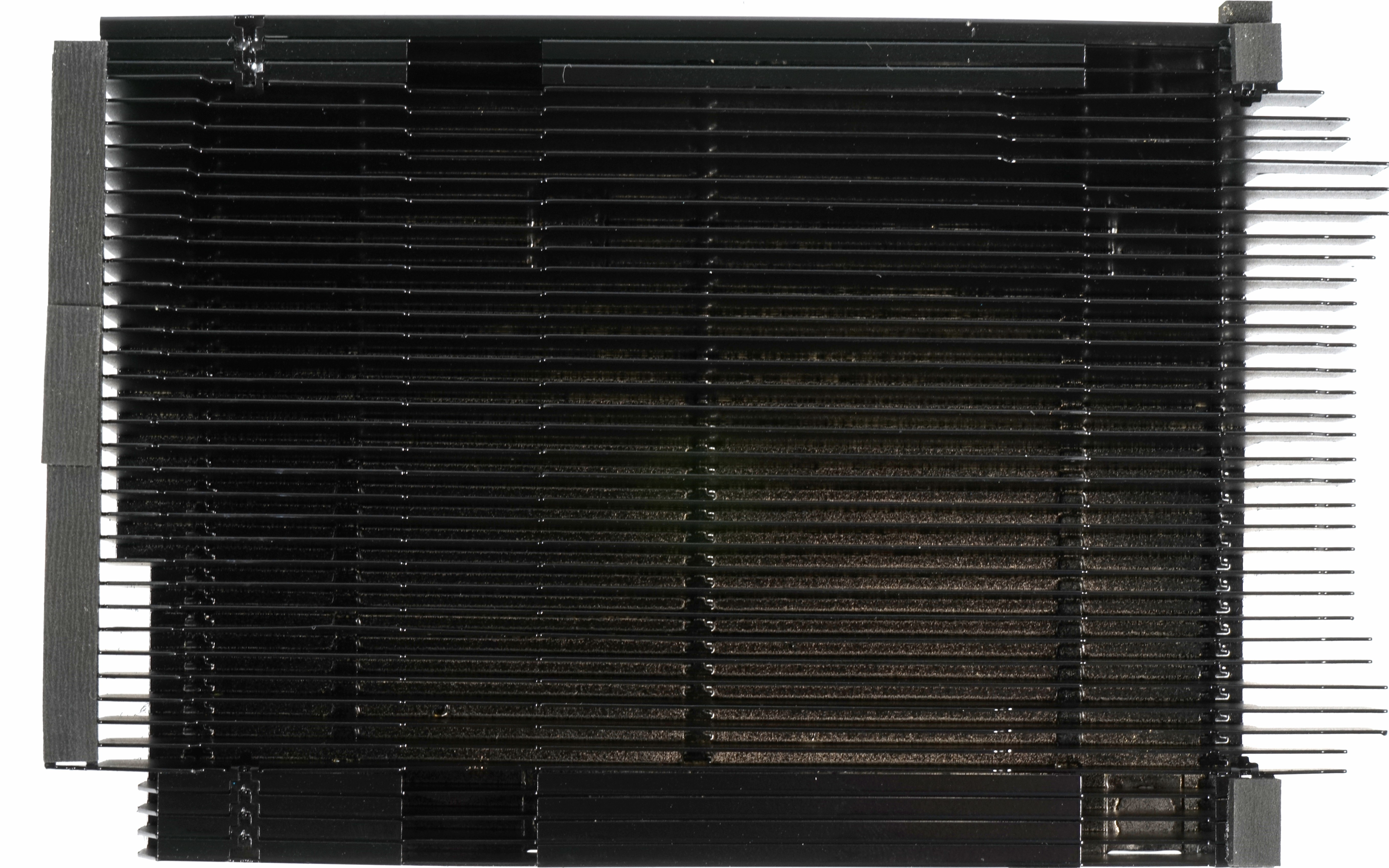 |
Unboxing: Board Design
Finally, let's take a look at the board and the improvements announced by Nvidia. What is striking at first glance: The range of voltage converters has now undergone a full assembly compared to the Titan X (Pascal), even if it is still the same board.
Nvidia has been using this common base since the Quadro P6000, whose 8-pin supply connection is on the rear, which can be clearly seen on the eight unoccupied soldering eyes.
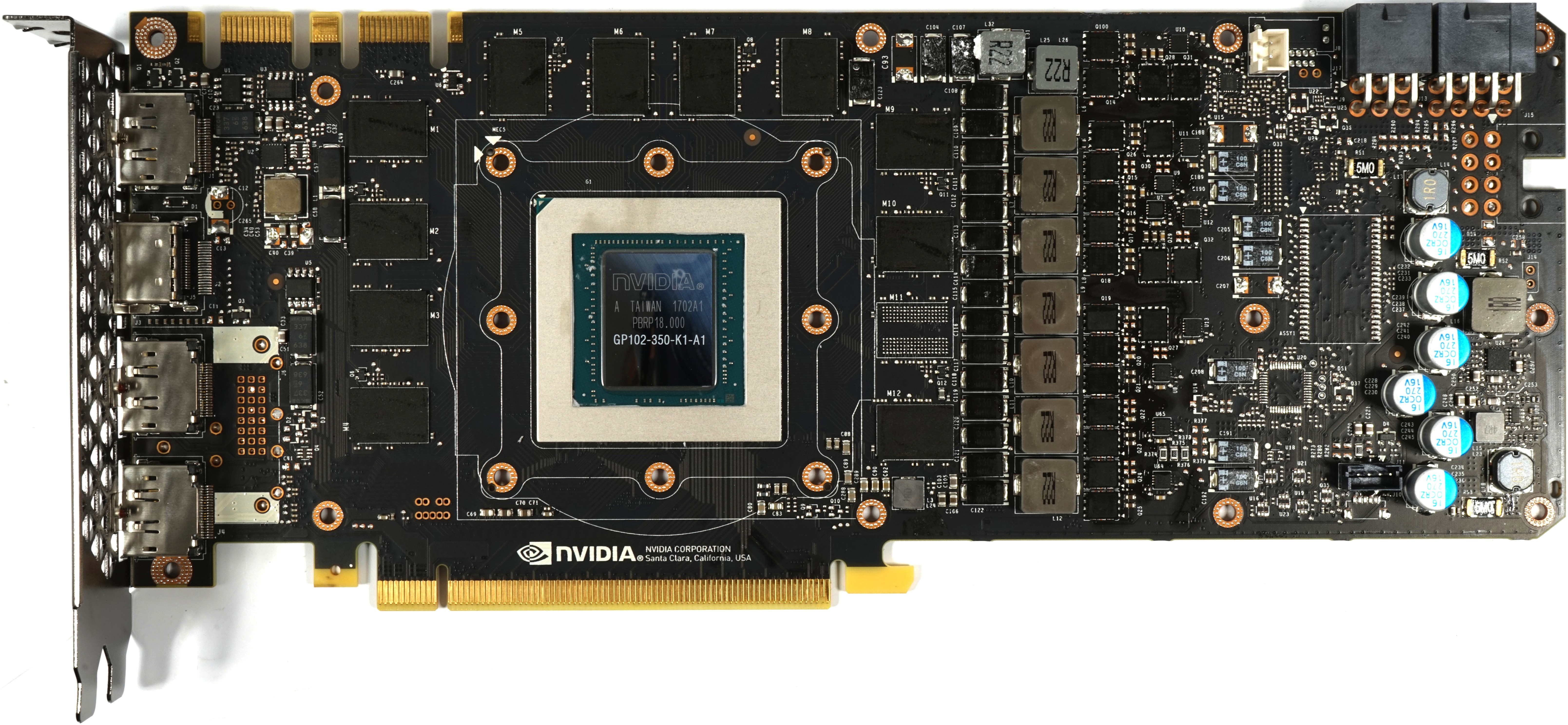
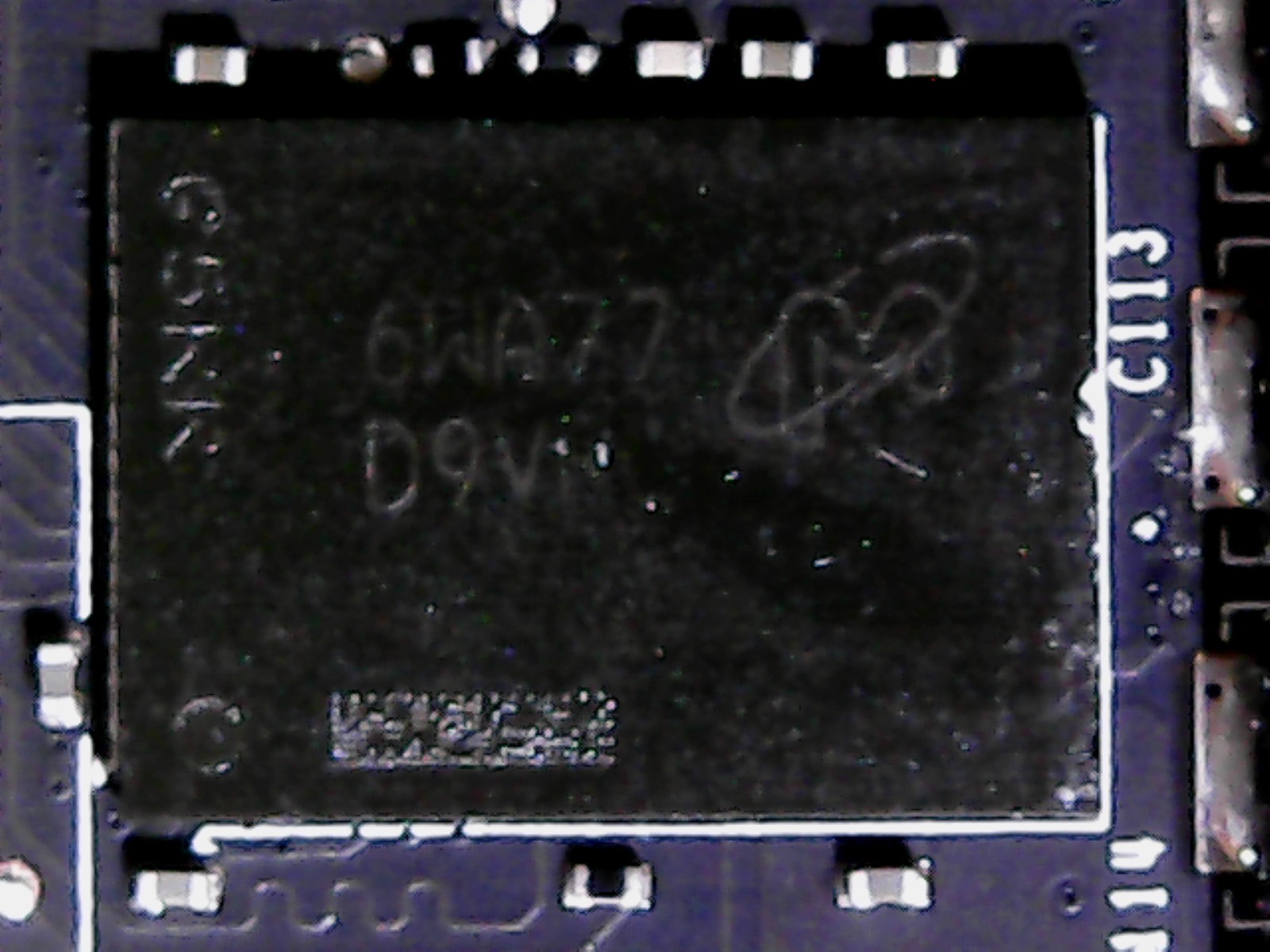 But let's take a quick look at the memory, where, unlike the Titan X (Pascal), a module is missing.
But let's take a quick look at the memory, where, unlike the Titan X (Pascal), a module is missing.
A total of 11 of the new G5X-Micron modules of type MT58K256M321-Ja110, which offer up to 11 GByte/s and are therefore intended to compensate the missing 32 bits of the memory interface with a higher clock speed of 5500 MHz (effectively), are installed on this card.
We are somewhat surprised that Nvidia didn't install the MT58K256M321-Ja120, which clocks a little higher. But one is probably afraid of a thermal problem of the storage tank operated with up to 1.35 volts, which in both cases may get hot up to a maximum of 95°C.
With the voltage converters, Nvidia stays true to itself and relies on a good old acquaintance with the uP9511 for the GPU and its seven phases, which can be found as usual on the back of the board.
This component selection for the PWM controller makes perfect sense, as it can operate the seven phases simultaneously and not only control 6(+2) phase designs.
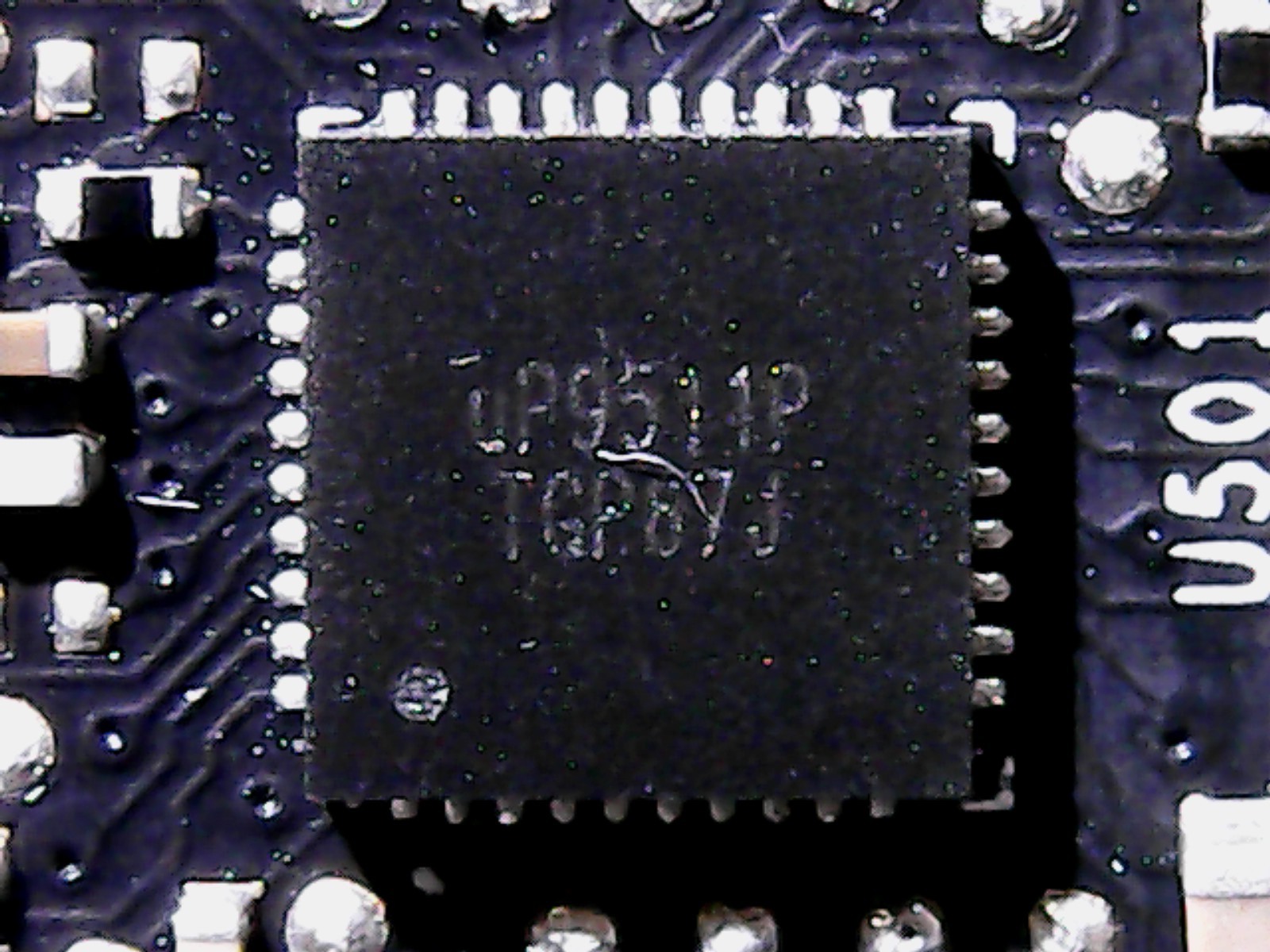 |
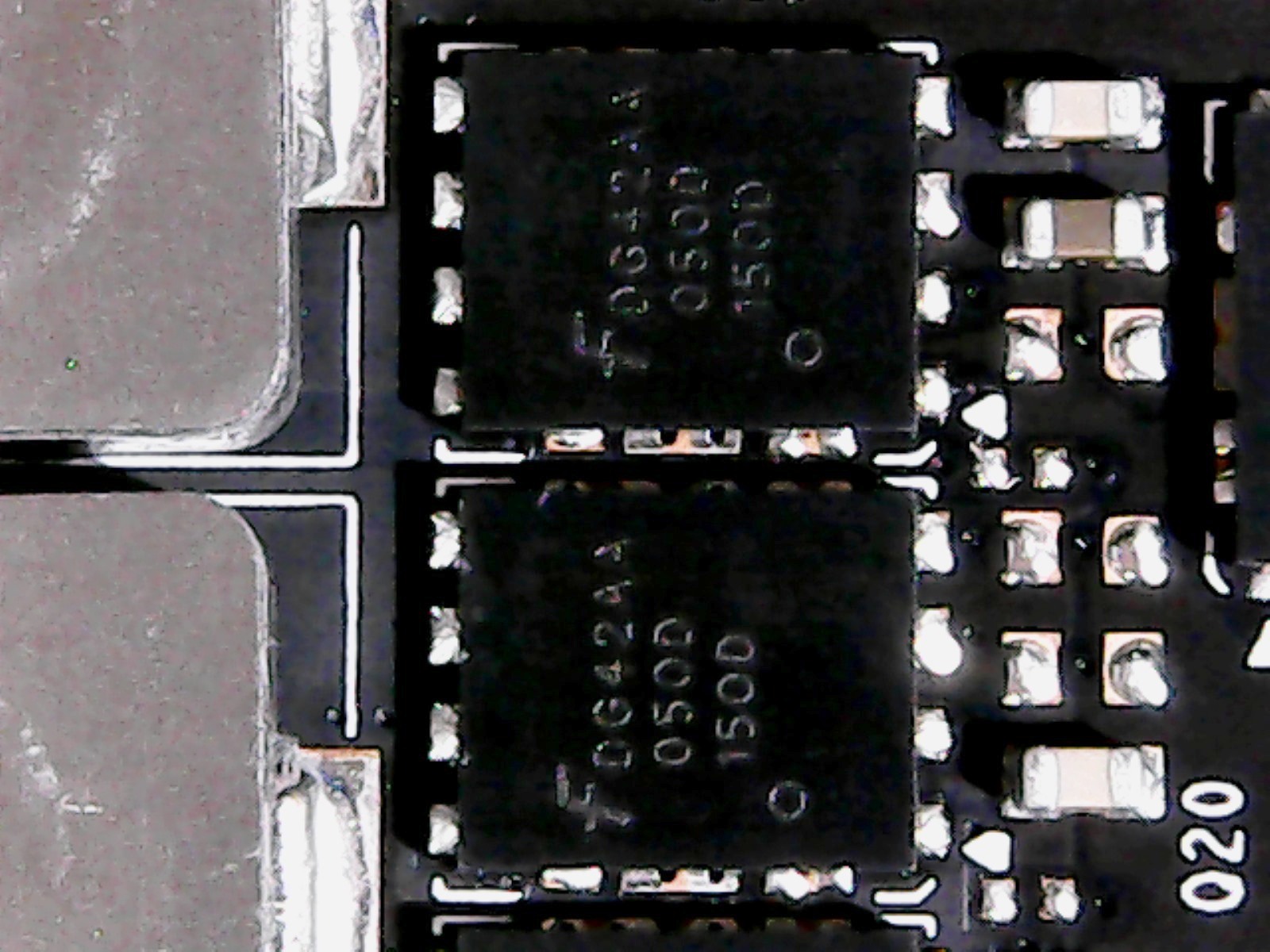 |
The design of the voltage converters is interesting in that Nvidia relies on a rather simple design made of simple buck converter (LM53603) for the high-side and now two instead of a MOSFET on the low-side, which in the form of two Fairchild-D424-N-Channel MOSFETs. This slightly equalizes the hotspots, because the power dissipation is thus distributed over a twice as large area.
The coils rely on simply encapsulated ferrite trays, which are qualitatively equivalent to Foxconn's Magic coils, can be machine-mounted and are not plugged through. Thermally, this is an advantage for the back of the board, whereby Nvidia incomprehensibly does not cool the hot coils, but only the adjacent capacitors.
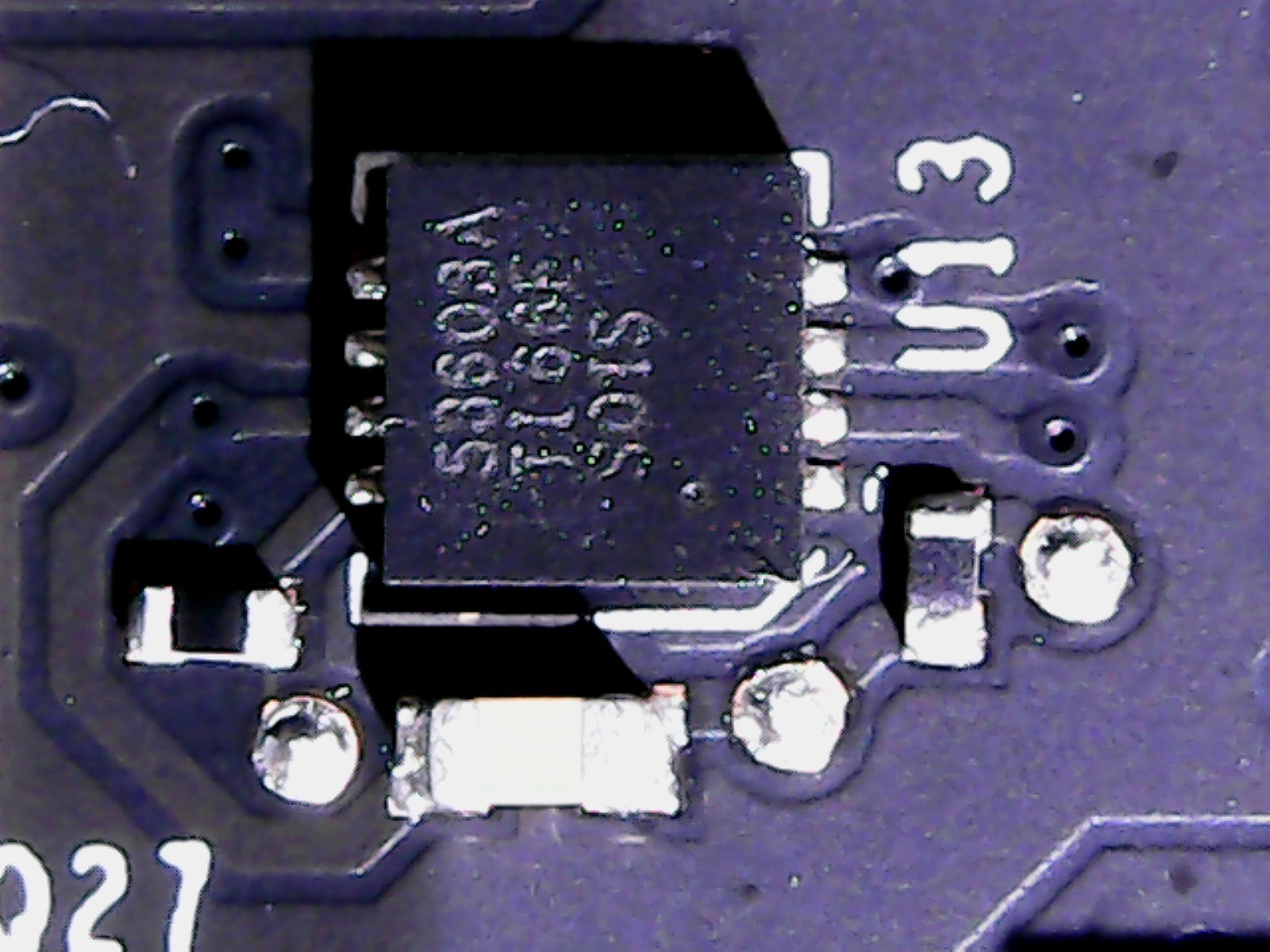 |
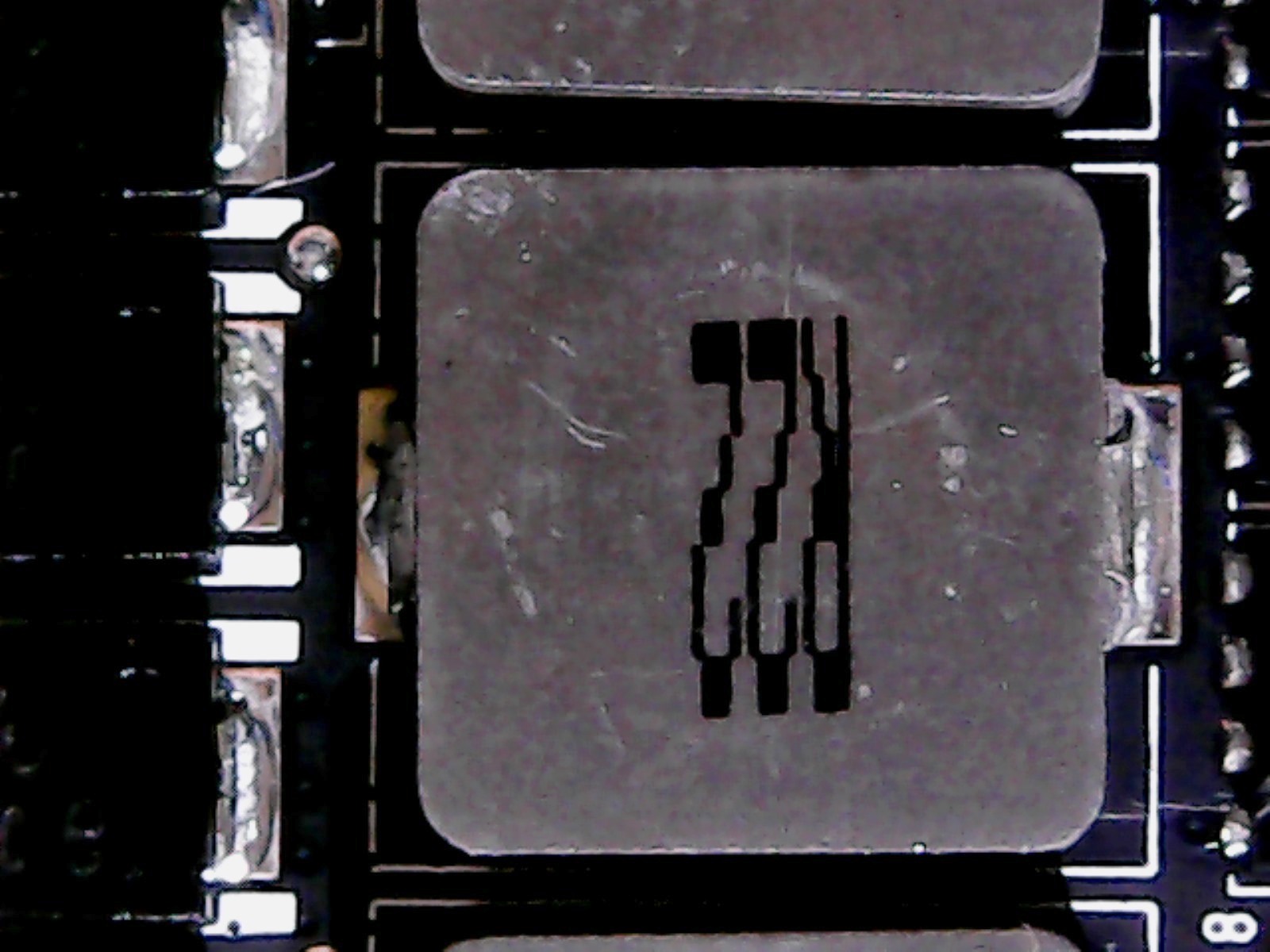 |
The memory is fed via two parallel controlled phases, which are controlled by an uP1685. The low-side is solved via two dual-N-channel logic-level PowerTrench-MOSFETs E6930, which is rather unusual, the high-side with the already mentioned FD424. The coils are then correspondingly smaller for these two simpler phases.
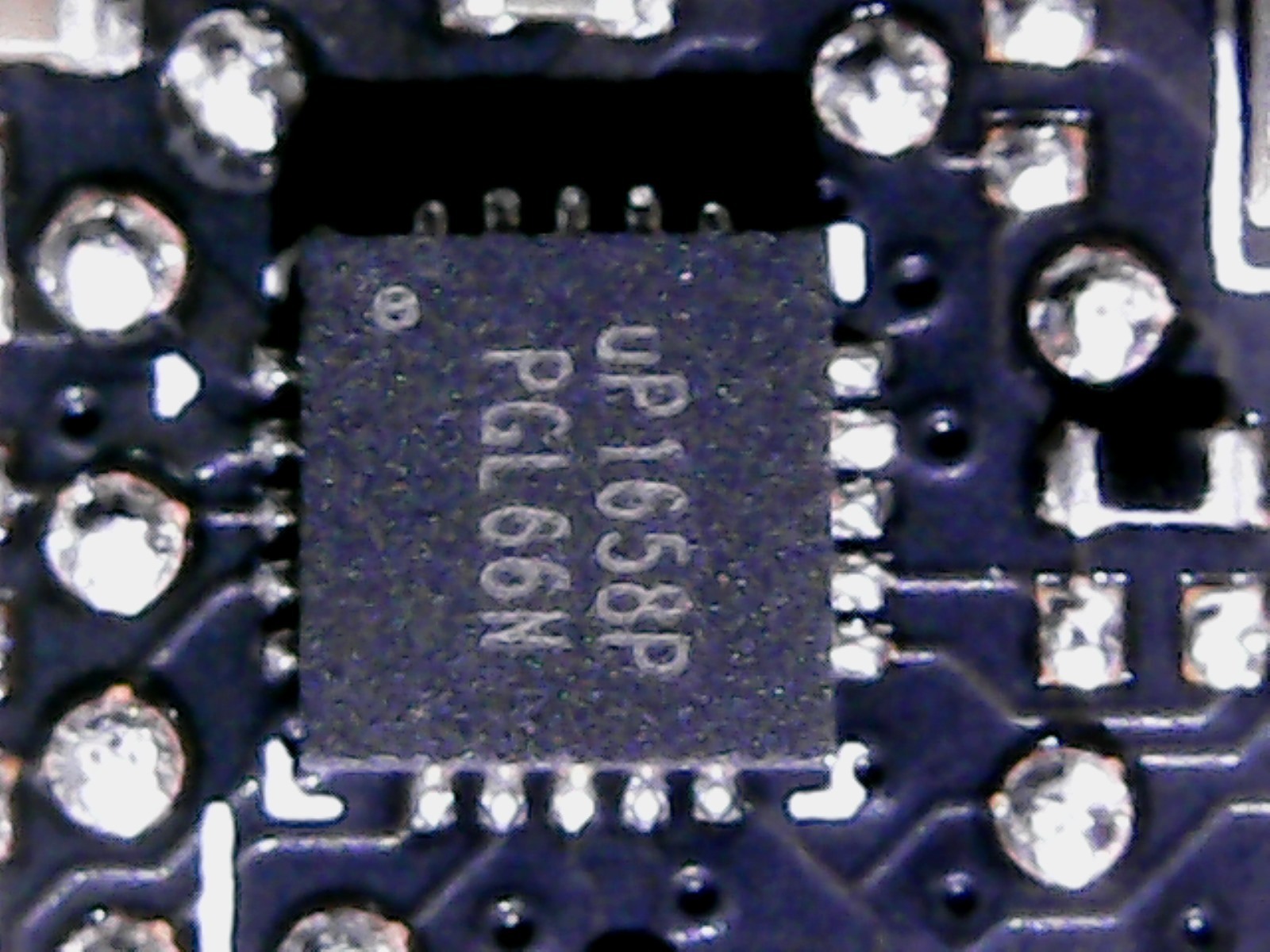 |
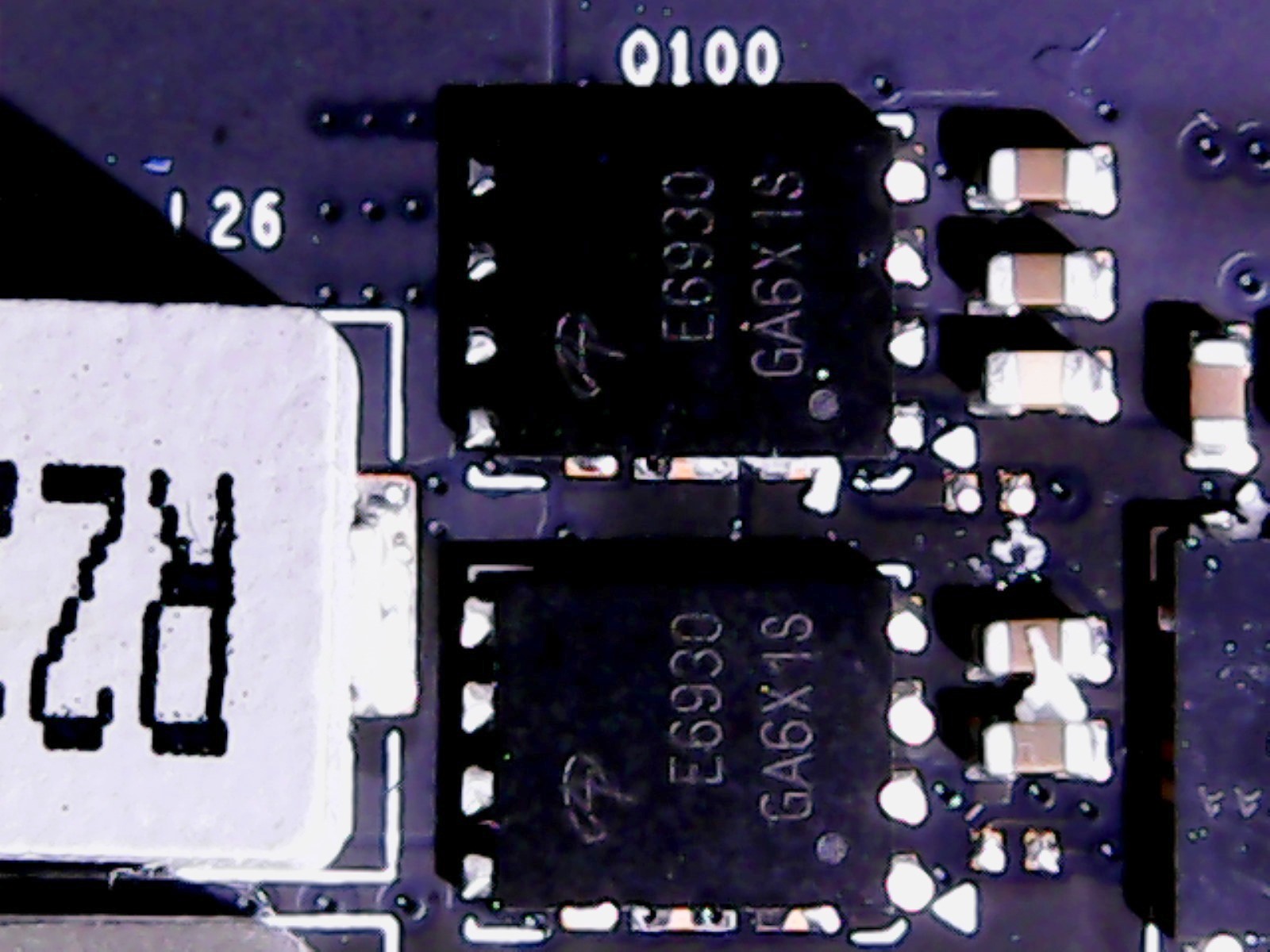 |
Conclusion – and teaser
So what about the new cooler design mentioned? Since we are not yet allowed to give more specific figures, we would better describe and rewrite it as a new cooling concept, in which both the active components and the waste heat dissipation with additional pads are among the most obvious changes. The cooling capacity is unlikely to be any different.
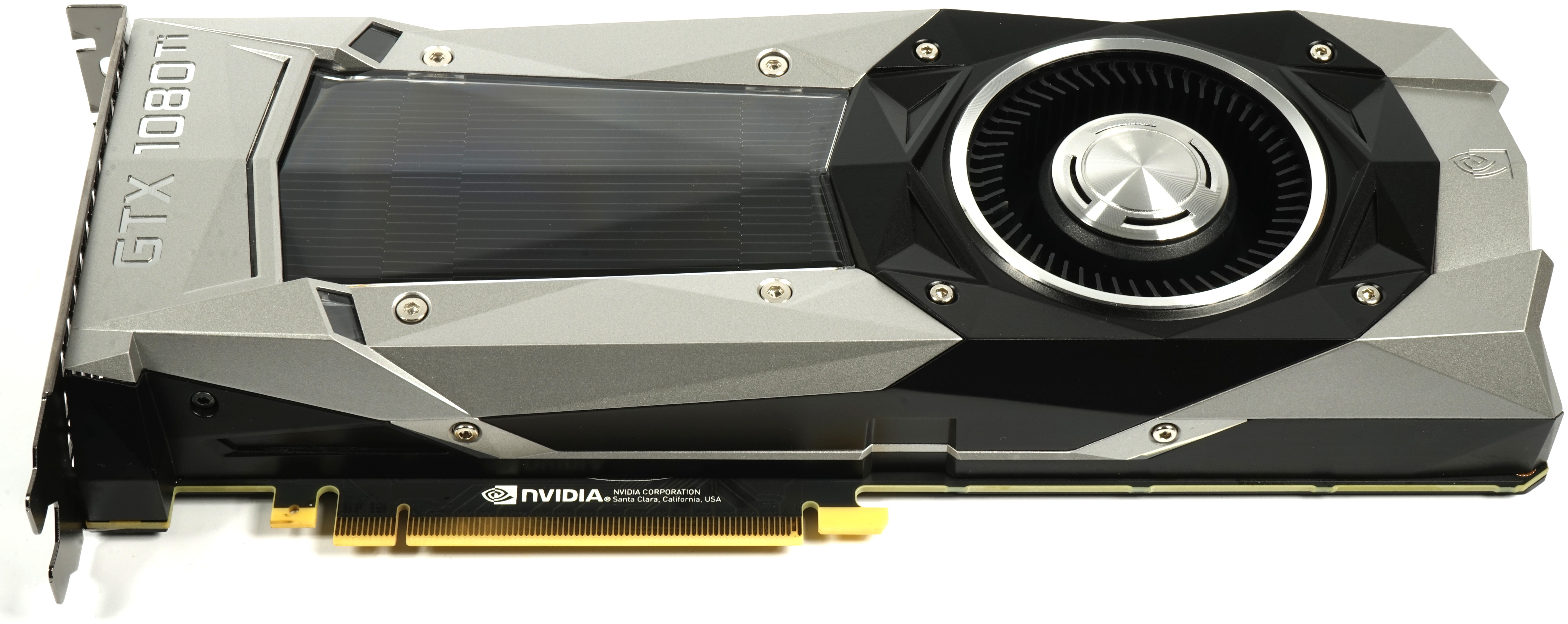
But we can only report on this and above all about how the new card performs in daily use. As exciting as it is, NDA remains NDA. Also for us. A start has been made at least once, even if it is only a slice of the thick salami.
































Kommentieren